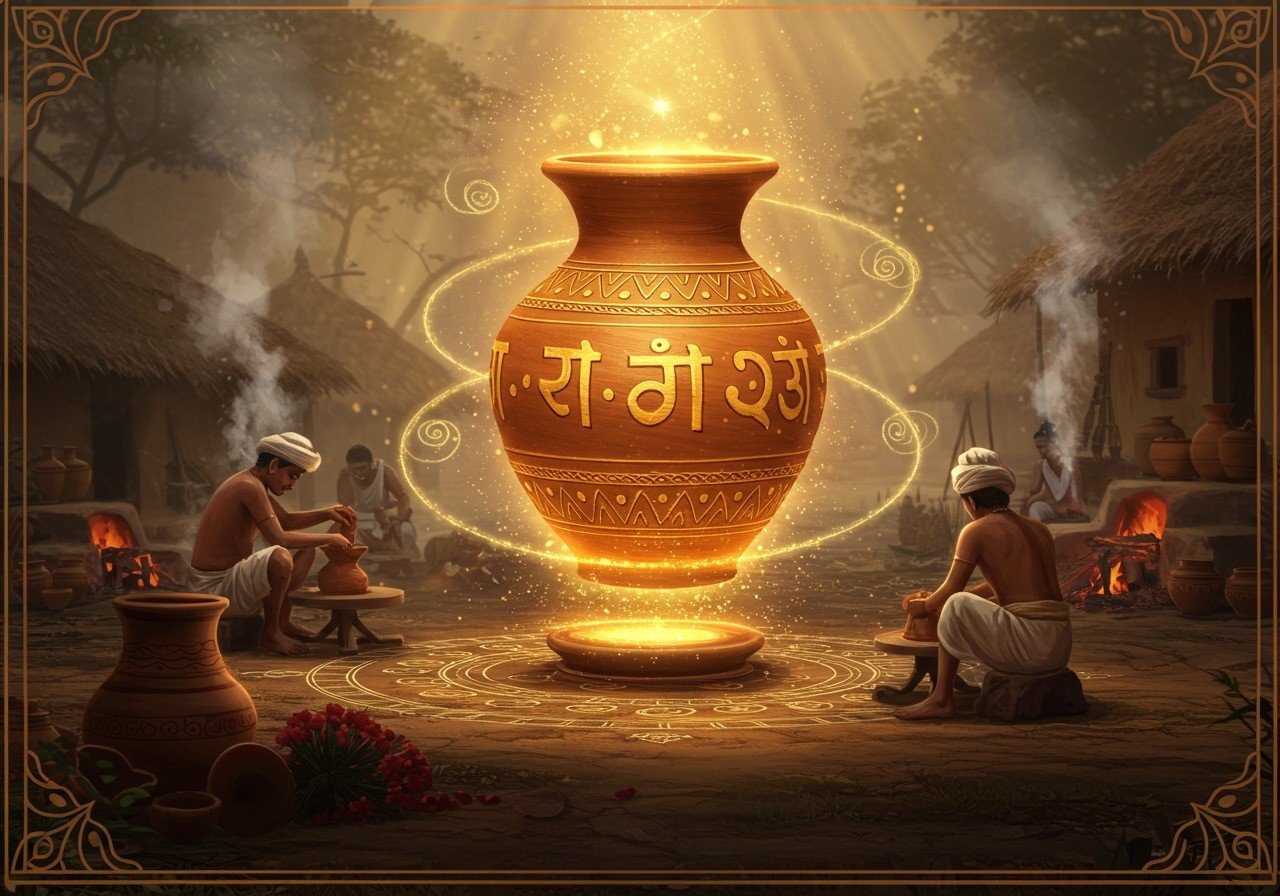
The Ochre Coloured Pottery (OCP) culture, a Bronze Age civilization of the Indo-Gangetic Plain (circa 2000-1500 BCE), offers a fascinating glimpse into the transition from the declining Indus Valley Civilization to the emerging Vedic culture. Spanning from eastern Punjab to northeastern Rajasthan and western Uttar Pradesh, this culture is distinguished by its unique ochre-colored pottery, reflecting influences from both Late Harappan and Vedic cultures. This blog delves into the significance of OCP during the Vedic period, exploring its origins, distribution, and cultural impact.
Origins and Characteristics
The OCP culture is archaeologically identified by its distinctive pottery style. Emerging during the late Harappan period, it continued into the early Vedic Age. The pottery, crafted from specific clay types and fired using traditional techniques, features decorative patterns and motifs of artistic significance.
Key features of OCP include:
- Distinctive Pottery: The hallmark of this culture is its ochre-colored pottery, exhibiting unique shapes and designs, setting it apart from other contemporary pottery traditions.
- Timeline: Existing from approximately 2000-1500 BCE, the OCP culture bridges the Late Harappan and early Vedic periods, signifying a cultural transition.
- Materials and Techniques: Crafted from particular clay types and fired using specific methods, the pottery reflects the technological advancements of the time.
- Geographical Distribution: Primarily found across the Indo-Gangetic Plain, from eastern Punjab to northeastern Rajasthan and western Uttar Pradesh, its distribution indicates the culture’s reach.
- Associated Artifacts: Alongside pottery, other artifacts such as tools and domestic items have been unearthed, offering a broader understanding of daily life within the OCP culture.
Archaeologists utilize various scientific methods, including carbon dating and stratigraphic analysis, to date and analyze OCP artifacts, providing valuable insights into this ancient culture.
Significance in the Vedic Age
OCP played an integral role in the daily lives of people during the Vedic period. Used in domestic settings, rituals, and funerary practices, the ochre color held symbolic meaning, representing purity and auspiciousness within Vedic traditions. References to pottery in Vedic texts, such as the Rigveda, underscore its cultural importance.
Key aspects of OCP’s significance:
- Daily Life: OCP pottery was essential for everyday activities, including cooking, storage, and serving, reflecting its practical importance.
- Ritualistic Use: The pottery’s presence in ritualistic contexts suggests a deeper symbolic meaning, potentially linked to religious beliefs and practices.
- Symbolism of Ochre: The distinctive ochre color, derived from iron oxide, held cultural and religious significance, likely associated with purity and auspiciousness.
- Literary References: Mentions of pottery in Vedic texts like the Rigveda provide literary evidence of its importance and integration into the cultural narrative.
- Socio-Economic Implications: The distribution of OCP artifacts suggests established trade networks and economic interactions within the region.
OCP further reflects the social and economic dynamics of the Vedic Age, showcasing the evolution of styles and techniques from the preceding Harappan period.
Distribution and Key Archaeological Sites
OCP artifacts are predominantly discovered in the Ganga-Yamuna Doab region. Significant excavations have unearthed notable artifacts, providing valuable insights into the culture. Areas with high concentrations of OCP artifacts point to key archaeological sites.
Important points regarding distribution:
- Key Sites: The Ganga-Yamuna Doab region stands out as a major hub for OCP findings, indicating a significant population center for this culture.
- Excavations: Extensive excavations at sites like Atranjikhera and Lal Qila have yielded significant OCP artifacts, enriching our understanding of the culture.
- Preservation Challenges: Environmental factors, such as soil composition and erosion, can impact the preservation of OCP artifacts, posing challenges for archaeologists.
Connecting with Vedic Pottery Traditions through Poojn.in
Poojn.in, India’s largest cultural goods and services store, offers a unique opportunity to connect with the rich heritage of Vedic pottery traditions. Our collection includes authentic clay pottery items reminiscent of the OCP culture.
- Traditional Clay Pot (Hadi/Kundo) with Dhakkan: Experience the authenticity of hand-printed clay pots, available in a 10-inch size, featuring designs inspired by traditional ochre-colored pottery. Ideal for cooking, storage, and embracing a connection to the past.
- Complete Clay Dinner Set: Bring tradition to your dining table with a complete clay dinner set, including a 12-inch thali, serving bowls, and glasses. The hand-printed designs and authentic clay material offer a tangible link to ancient pottery practices.
These items, crafted with traditional methods, offer both practical functionality and a symbolic connection to our Vedic heritage. The ochre coloring and traditional designs resonate with the aesthetics of the OCP culture.
Visit Poojn.in to discover our complete range of traditional clay items for your home and ritualistic needs.
Conclusion
The Ochre Coloured Pottery culture provides a captivating window into the lives and practices of people during the late Harappan and early Vedic periods. This distinct pottery style served both utilitarian and symbolic purposes, with the ochre color holding particular cultural and religious significance. Through archaeological research and the preservation of traditional crafts, we can continue to learn from and appreciate the rich heritage of the OCP culture.
FAQs: Ochre Coloured Pottery Culture & the Vedic Age
What defines the Ochre Coloured Pottery Culture? The Ochre Coloured Pottery Culture is characterized by its distinctive ochre-colored pottery, found in archaeological sites associated with the Vedic Age (circa 2000-1500 BCE).
Where are OCP artifacts primarily located? OCP artifacts are mainly found in the northern and western regions of India, particularly in the Ganga-Yamuna Doab region, encompassing areas like Uttar Pradesh, Haryana, and Rajasthan.
What is the significance of Ochre Coloured Pottery in the Vedic period? OCP pottery offers insights into the lifestyle, cultural practices, and trade networks of the Vedic Age, shedding light on the daily lives and beliefs of the people.
Why is Ochre Coloured Pottery relevant to UPSC studies? The OCP culture is a significant topic in ancient Indian history, relevant to UPSC examinations as it connects to broader themes of archaeology, cultural development, and the Vedic period.


